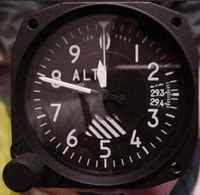Fri, Jun 30, 2006
Advertisement
More News
 Airborne 10.03.25: Phantom 3500 Buy, Chinese Military Company, NOTAM Redesign
Airborne 10.03.25: Phantom 3500 Buy, Chinese Military Company, NOTAM Redesign
Also: Lufthansa Chops 4000, FlyNow eCopter, Pilatus PC-12 PRO, USMC Buys 99 CH-53Ks Otto Aerospace announced that Flexjet will be its first fleet customer and its launch customer f>[...]
 ANN's Daily Aero-Term (10.05.25): Terrain/Obstruction Alert
ANN's Daily Aero-Term (10.05.25): Terrain/Obstruction Alert
Terrain/Obstruction Alert A safety alert issued by ATC to aircraft under their control if ATC is aware the aircraft is at an altitude which, in the controller's judgment, places th>[...]
 Airborne Affordable Flyers 10.02.25: MOSAIC Start Date, AFE25 Tickets, ePulitzer
Airborne Affordable Flyers 10.02.25: MOSAIC Start Date, AFE25 Tickets, ePulitzer
Also: Bristell Receives Part 23, Sonex Highwing Webinar, AV-30-C Update, MOSAIC Consultancy The GA community is eagerly anticipating the date that marks the beginning of a new era >[...]
 NTSB Final Report: Zodiac CH 650B
NTSB Final Report: Zodiac CH 650B
The Airplane Ballooned About 10 Ft Above The Runway When It Encountered A Wind Gust Analysis: The pilot was conducting takeoffs and landings in the airplane at the time of the acci>[...]
 Classic Aero-TV: RDD Enterprises' LX-7 - Taking The Lancair to a Whole New Level
Classic Aero-TV: RDD Enterprises' LX-7 - Taking The Lancair to a Whole New Level
From 2019 (YouTube Edition): Company Updates Its Program For Highly Modifying Lancair IV-P Airframes RDD Enterprises, a company that was created to modify Lancair IV-P airplanes in>[...]
blog comments powered by Disqus





